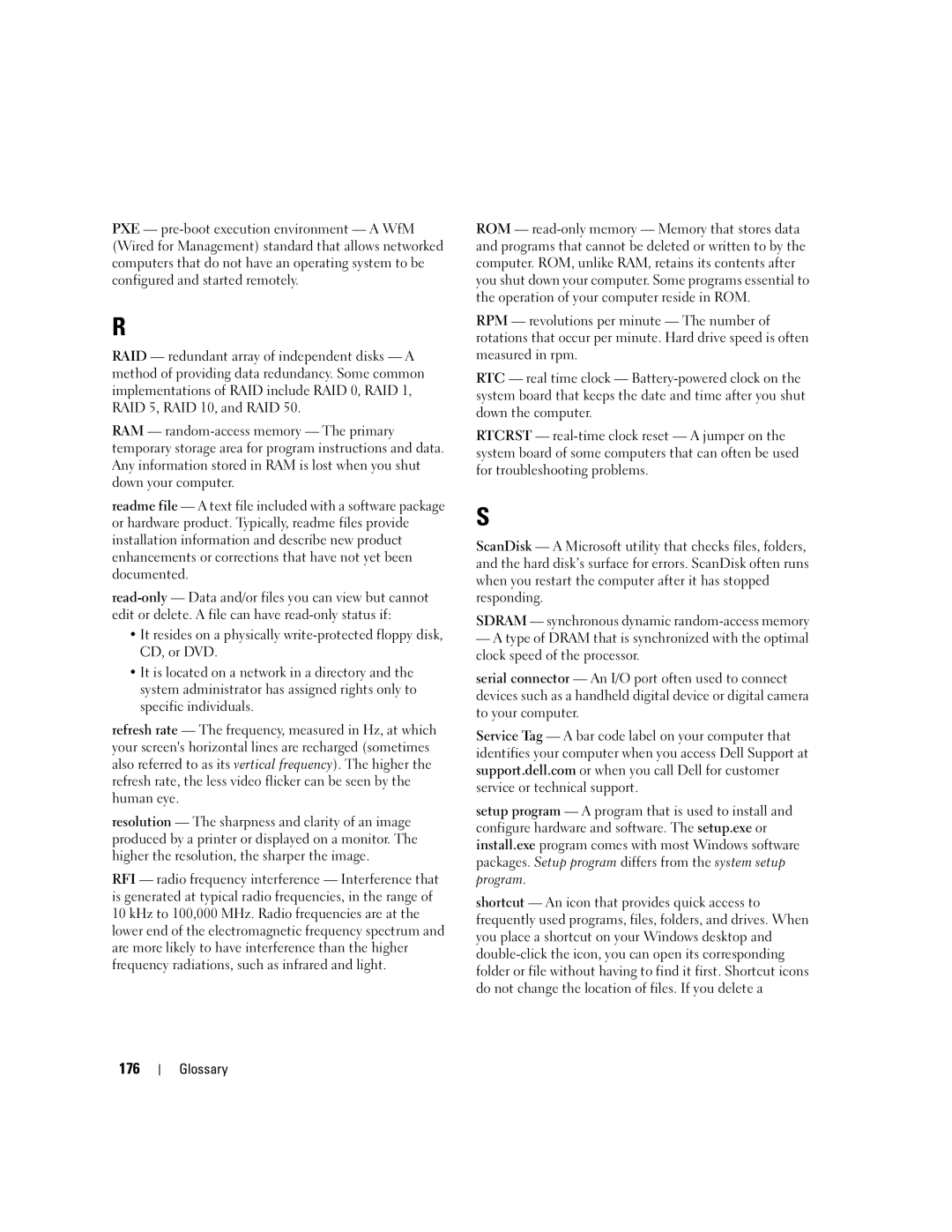PXE —
R
RAID — redundant array of independent disks — A method of providing data redundancy. Some common implementations of RAID include RAID 0, RAID 1, RAID 5, RAID 10, and RAID 50.
RAM —
readme file — A text file included with a software package or hardware product. Typically, readme files provide installation information and describe new product enhancements or corrections that have not yet been documented.
•It resides on a physically
•It is located on a network in a directory and the system administrator has assigned rights only to specific individuals.
refresh rate — The frequency, measured in Hz, at which your screen's horizontal lines are recharged (sometimes also referred to as its vertical frequency). The higher the refresh rate, the less video flicker can be seen by the human eye.
resolution — The sharpness and clarity of an image produced by a printer or displayed on a monitor. The higher the resolution, the sharper the image.
RFI — radio frequency interference — Interference that is generated at typical radio frequencies, in the range of 10 kHz to 100,000 MHz. Radio frequencies are at the lower end of the electromagnetic frequency spectrum and are more likely to have interference than the higher frequency radiations, such as infrared and light.
ROM —
RPM — revolutions per minute — The number of rotations that occur per minute. Hard drive speed is often measured in rpm.
RTC — real time clock —
RTCRST —
S
ScanDisk — A Microsoft utility that checks files, folders, and the hard disk’s surface for errors. ScanDisk often runs when you restart the computer after it has stopped responding.
SDRAM — synchronous dynamic
—A type of DRAM that is synchronized with the optimal clock speed of the processor.
serial connector — An I/O port often used to connect devices such as a handheld digital device or digital camera to your computer.
Service Tag — A bar code label on your computer that identifies your computer when you access Dell Support at support.dell.com or when you call Dell for customer service or technical support.
setup program — A program that is used to install and configure hardware and software. The setup.exe or install.exe program comes with most Windows software packages. Setup program differs from the system setup program.
shortcut — An icon that provides quick access to frequently used programs, files, folders, and drives. When you place a shortcut on your Windows desktop and
